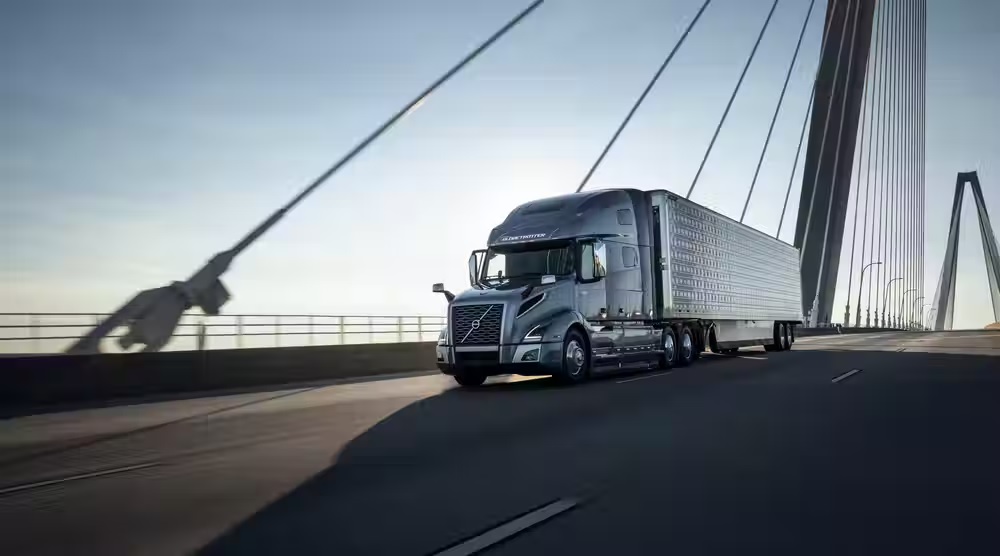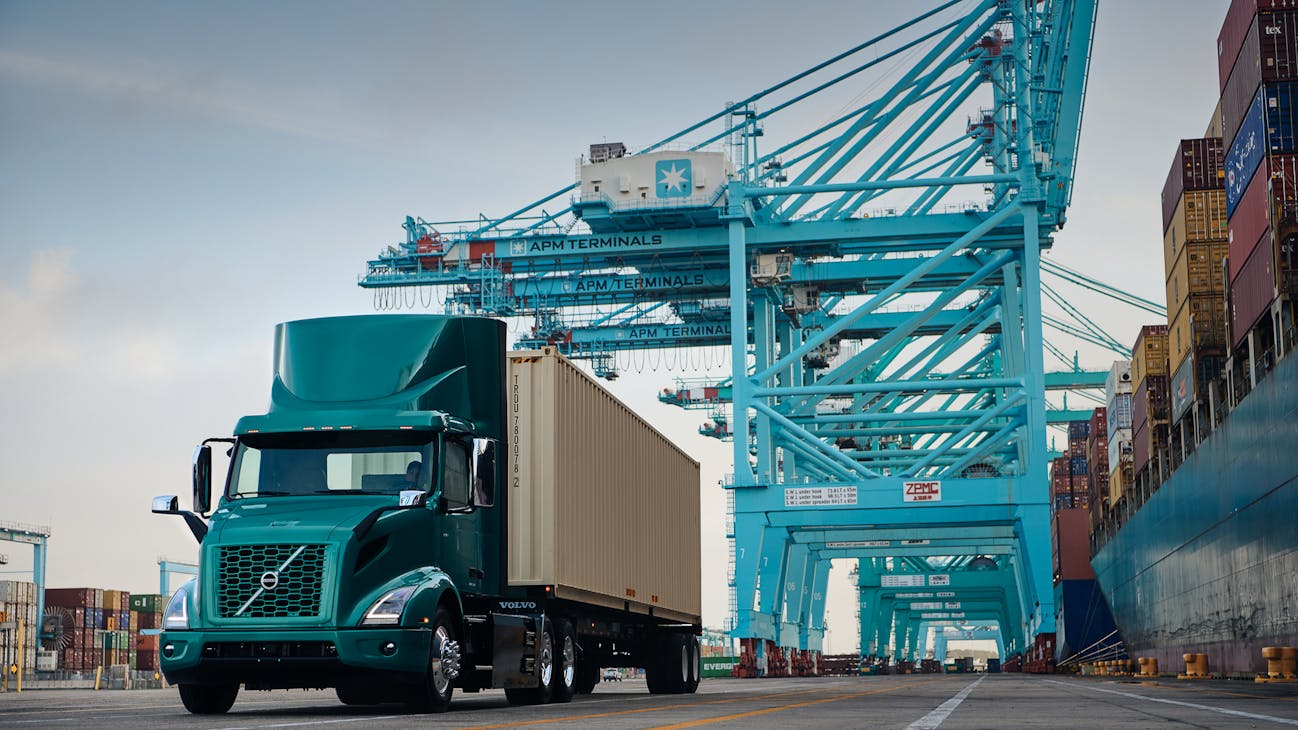Today’s advancement of digitization implicitly benefits vehicle uptime, and as the drive for zero-emission operations continues technologies that promote lower total cost of ownership and efficiency will win.
This article is Part II of a whole story, ‘Finding the efficiency sweet spot in trucking‘.
While fuel economy and emissions reductions play key roles in overall equipment efficiency if a truck can’t make it from Point A to Point B uninterrupted, what’s the point? Today’s abundance of connected technologies aim to provide a holistic view of a vehicle’s health to improve equipment uptime.
Navistar, for example, offers its OnCommand Connection Advanced Remote Diagnostics solution, which provides fleets with real-time images and views of what’s going on with their assets. The goal is to help carriers better plan out their downtime and address any maintenance issues in advance of a down condition, said Chet Ciesielski, VP of Navistar’s on-highway truck business.
Another major piece of the uptime equation is ease of maintenance, he added.
“Our connected technology is the eyes to the vehicle for any fleet,” Ciesielski said. “We see what’s going on in the truck in real-time even before the driver sees it.”
Dealers and fleets can monitor the health of a vehicle in real-time via the International 360, Navistar’s fleet health monitoring system.
“This gives us the ability to give reports so they can [diagnose] on a weekly basis, a daily basis, whatever their cadence would want to be,” Ciesielski said. “It allows them to see the vehicle so they can keep it on the road and plan for anything that’s going on.”
The bigger lever moving forward, Ciesielski pointed out, is predictive fleet maintenance, which can flag a unit and predict when the vehicle should be taken off the road before a catastrophic or downtime event occurs.
Daimler Truck North America (DTNA) also has its own connectivity solutions, Detroit Connect, which give fleets and dealers access to real-time vehicle performance data. “This allows fleet managers to make decisions about when the trucks need to be serviced, how to resolve fault codes, and optimize performance with remote updates to make parameter changes as well as ECU firmware updates,” said Mary Aufdemberg, general manager of product strategy and market development for DTNA.
Beyond vehicle insights, DTNA’s truck connectivity technologies also power efficient fleet management operations via in-depth reporting on safety events or by facilitating a digital platform ecosystem, she added.
DTNA recently partnered with Platform Science and its Virtual Vehicle platform so fleets could access telematics, software solutions, real-time vehicle data, and third-party applications directly from their vehicles.
“It always goes back to some very key basics that you’re seeing,” said Scott Newhouse, chief engineer for Peterbilt. “Connectivity helps provide efficiency and how you manage it. Being more connected gives you more guidance.”
Newhouse said fleets can recognize those benefits in Paccar’s diagnostics solutions with over-the-air updates.
All of Volvo’s new trucks also come standard with remote diagnostics and remote software downloading. These solutions allow fleets to conduct necessary software updates or parameter setting changes remotely over the air instead of having to make an appointment at a dealership.
“Our customers are focused on making sure they have service plans tailored to their truck and business needs,” said Johan Agebrand, product marketing director at Volvo Trucks North America (VTNA). The Volvo Blue Contract plan, for example, delivers insights into service schedules and costs upfront, giving fleets service plans tailored to specific vehicles and applications.
In addition, remote diagnostics enable the Volvo Uptime Center to constantly monitor a truck’s health, identifying when critical parts will reach their end of life, Agebrand added.
“Remote diagnostics help identify emerging issues before a breakdown occurs, which minimizes the occurrence of unplanned stops,” he said. “Remote programming enables over-the-air software updates in a matter of minutes to fix identified issues. This allows the truck to be constantly updated with the latest software, ensuring all components operate at their optimum efficiency, leading to better fuel efficiency, higher productivity, and uptime.”
The future roadmap
As the transportation industry works its way toward a zero-emission future, OEMs and fleets are discussing exactly what those paths look like and when newer technologies will become a scalable reality.
For Navistar, electric product offerings begin in the medium-duty and bus segments. Until battery-electric and hydrogen fuel cells are proven in the linehaul segment, Navistar is not expected to release a Class 8 electric truck, Mathias Carlbaum, Navistar president and CEO, said during a media roundtable discussion in February.
“About the timeframe of 2027 to 2028, we do see the real tipping point for long-haul technology, batteries, infrastructure, charging, and all of this comes together,” Carlbaum explained. “We will be gradually introducing it, but the real lever comes when the TCO case is so evident.”
Navistar’s Ciesielski said that the OEM’s future roadmap also includes autonomous truck technology over the next two decades. In the meantime, the on-highway plan, according to Ciesielski, is winning with aerodynamics and reducing parasitic losses.
“Trucking is the perfect environment to develop automated technologies, electrification technologies, and connected technology,” Stephan Olsen, Paccar Innovation Center general manager, told FleetOwner during CES 2022. “There’s a business case where the tech pays the customer back over time. So, we see a lot of opportunities to excite the younger generation of talent to come into the trucking industry.”
Volvo’s Agebrand also pointed to the next-generation Volvo VNR Electric and the OEM’s plans to introduce hydrogen fuel cell-powered trucks for long and heavy haul in the second half of the decade.
“As a transport provider, we are part of the problem, but we are very determined to be part of the solution and be a leader in sustainable transportation,” Volvo’s Agebrand said. “Decarbonization is what we need to achieve in our journey toward sustainability. The continued evolution of our trucks toward electrification is how.”
No matter what paths the industry takes along its journey to zero emissions, uptime and achieving the best possible TCO will remain king.
Source: https://www.fleetmaintenance.com/







